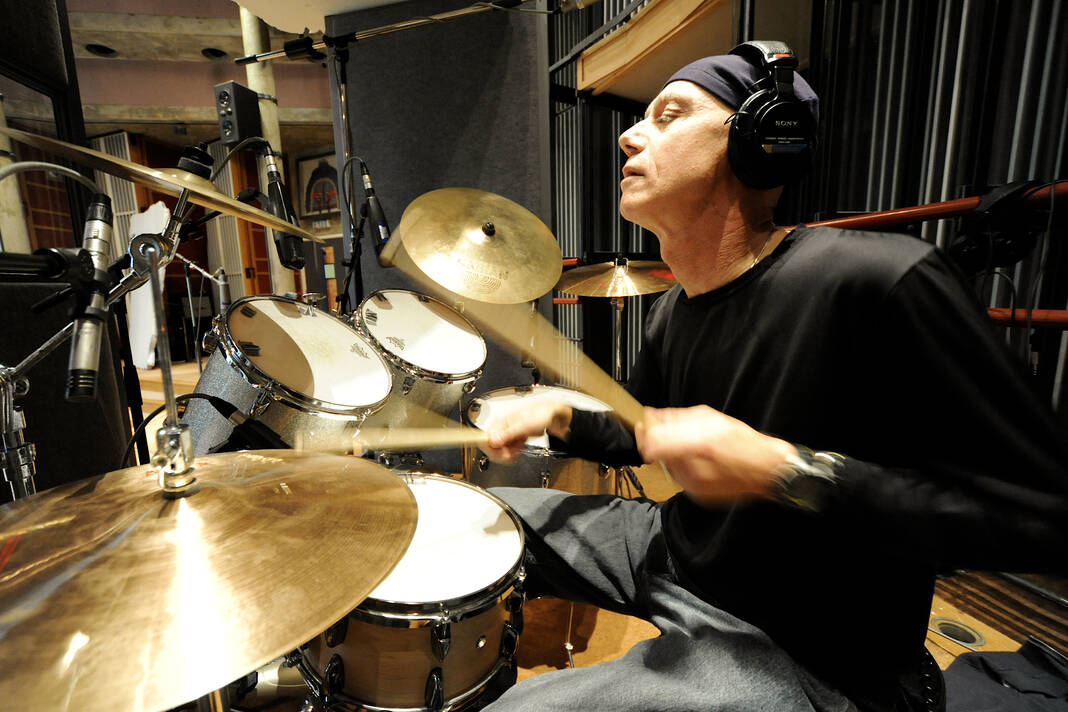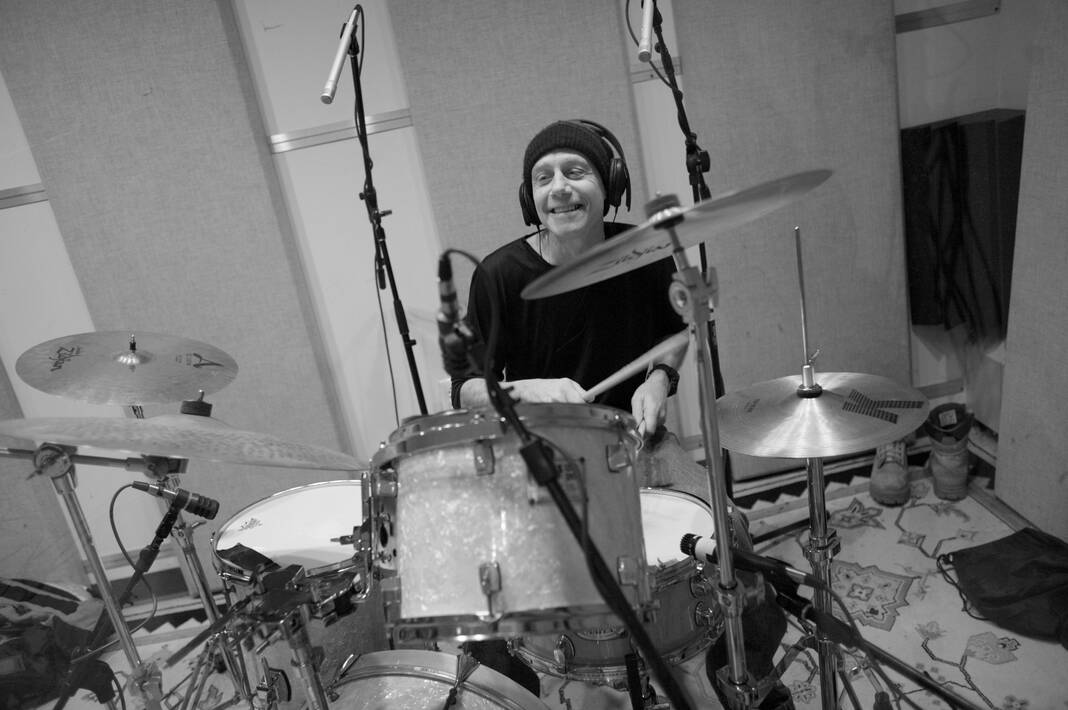
Keith LeBlanc at the drums.

Keith LeBlanc, the first hip-hop session drummer, is coming to Bowling Green State University on Wednesday for an evening of discussion.
His presentation is called “12 Movements of Boom,” done in conversational style with fellow recording artist Matthew Donahue, Ph.D., from the BGSU Popular Culture department.
“Be open to everything,” LeBlanc said. “Be curious … but find your own voice.”
More than just a session drummer, he is an accomplished solo artist and producer, playing on some of the most influential sound recordings in hip-hop with the Sugarhill Gang, Grandmaster Flash and Afrika Bambaataa.
LeBlanc became the first hip-hop session drummer when he got his gig at Sugarhill Records in 1979. Hip-hop was new and the artists needed a beat.
“We were just trying to get paid. We didn’t think we were changing the music industry,” LeBlanc said.
LeBlanc’s drum beats set the rhythm standard for the hip-hop movement, but he also had a major impact on industrial music as the drummer for the band Tackhead. Then in 1989 he also worked on the industrial music album “Pretty Hate Machine” by Nine Inch Nails, which in 2020 Rolling Stone magazine ranked at number 453 on its “500 Greatest Albums of All Time.” He is credited as a drummer, for production, mixing and remixing several songs.
He thanked his grandmother for channeling his thinking.
“As a kid, I was hyperactive. Rather than put me on drugs, my grandmother got me a snare drum. So I put that energy into playing drums and it came pretty natural to me,” LeBlanc said. “I was also severely dyslexic, but no one knew what that was back then.
“Music and art came easily to me, so that’s what I gravitated towards,” he said. “Seeing Ringo Starr and the Beatles on the Ed Sullivan Show kind of changed everything for me. I built a little drum set out of what I had in the house and started banging on stuff.
“I would spend all day, every day, playing drums with records. So I think I probably learned a lot in that period,” LeBlanc said. “It was a really good time — period — to be learning my craft, because there was so much excellent music at that time. Ya know, I loved everything, especially the drums. I was a big Cream fan. … I gravitated towards funk music. It just really moved me. I didn’t really make a distinction. I listened to everything.”
It was a classic album cover that got him to learn how to make the music of his heroes.
“I think the first record I really learned the drum parts from was Herb Alpert and the Tijuana Brass, ‘Whipped Cream and Other Delights,’” LeBlanc said.
That attention to detail was key.
“I always gravitated toward funk-type music. I don’t know why. But I got really good at it,” he said.
Eventually he found that playing hotel gigs was a good way to get paid.
His big break came when the drummer for the band Wood, Brass and Steel was leaving and recommended LeBlanc as his replacement. That is how he met Skip McDonald and Doug Wimbish. After a year together, they would become the house band for Sugar Hill Records,
“We went up there and started recorded right away, all the hip-hop music,” LeBlanc said. “We started doing gigs and recording, non-stop, for three or four years. I got a really good education there. I learned how to record, on-the-spot.”
LeBlanc’s next big break came with the advent of new technology, in the form of the drum machine.
“When the DMX came out, I saw my job disappearing, but rather than get upset, I realized — because at the time there were engineers programming it and they knew nothing about drums — I thought I could do that much better than an engineer,” LeBlanc said. “So I got myself one, and I got really good at programming it.”
LeBlanc’s approach to the machine was different.
“Because I played drums, I guess, I tried to get the machine to do things that a drummer could never do,” he said. “I approached it like a new instrument. So I stretched it out of shape. Working with Tackhead I did things that people are still copying now.”
His live and electronic beats can be found on a list of credits including Living Colour, REM, Annie Lennox, Mick Jagger, Ron Wood, Ministry, The Cure, Peter Gabriel, Tina Turner and Depeche Mode.
“I was always fascinated by technology anyway. When the first computers came out, I loved programming them. I was a musical geek, probably, and that hasn’t changed much over the years,” LeBlanc said. “I wish I had the technology I have now 40 years ago. But I’m glad I have my hands on it now.”
LeBlanc has also affected the music industry and the way artists are paid, when their music is sampled into another artist’s music. His beats are some of the most copied in the world.
LeBlanc’s “12 Movements of Boom,” will be on Wednesday at the BGSU Jerome Library, in the Pallister Conference Room at 7 p.m. The event is free and open to the public.

